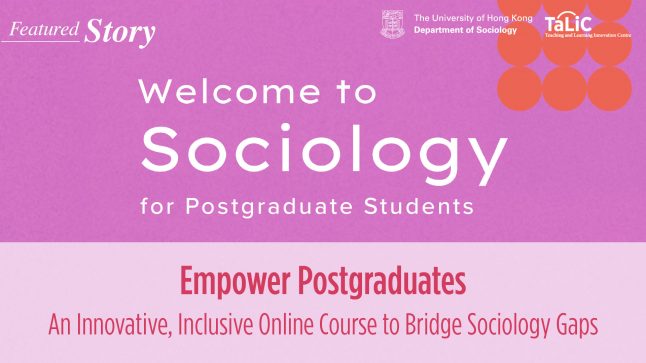School-university partnership is an important concept driving TELI’s work in reaching out to the younger generation. On March 19, we co-organized the “STEM Learning Fair 2016” with Pak Kau College in Tin Shui Wai to showcase our work in MOOCs, flipped classroom, and engineering education. About 100 secondary school teachers and over 260 students joined the event, where we exchanged ideas and experiences on Science, Technology, Engineering, and Mathematics (STEM) education.
At a time when discussions on innovation, entrepreneurship and information literacy are rekindling in the education sector, it is important that we communicate with young people and their teachers the opportunities afforded by STEM education in meaningful and appealing ways. For students, learning in these subjects is a first step to become good problem solvers. “They define objectives more clearly, think more logically, and are better at coming up with step-by-step solutions,” said Professor Ricky Kwok, Associate Vice-President (Teaching and Learning), who gave a keynote speech at the half-day event.


Using a simple learning kit consisted of a battery, a wire and a magnet, TELI challenged a group of primary students to figure out theories behind maglev trains.
For teachers, STEM activities often help them understand better the curiosity and educational needs of their students. “The question is, how to make the most of face-to-face class time to take that interest further,” asked Dr. Leon Lei, E-learning Technologist of TELI, who gave a talk on the challenges of STEM education at the parallel session. Based on his experience in teaching first-year engineering students, he reminded teachers that bringing more hands-on components and group-work experience to class is key to achieving learning objectives of STEM subjects. You may view Dr. Lei’s powerpoint here.
Ricky made special mention that in late April, HKU will be launching an open online course on the basics of flipped classroom and blended learning. Both primary and secondary school teachers are more than welcome to make use of resources in the course to enhance their classes.


Partnering with secondary schools is a rewarding experience for TELI. We will continue to collaborate with different organisations in technology education to further our impact in the community.
Further reading
-
Promotion of STEM Education – Unleashing Potential in Innovation (Curriculum Development Council, 2015)
http://www.edb.gov.hk/en/curriculum-development/renewal/index.html -
The Ecosystem of Innovation and Technology in Hong Kong (Our Hong Kong Foundation, 2015)
http://ourhkfoundation.org.hk/index.php/2015-09-23-05-07-31/2015-12-16-09-14-10











